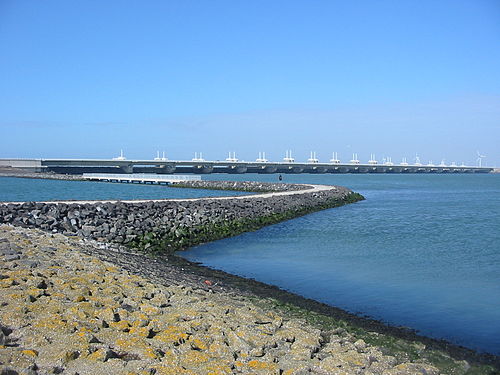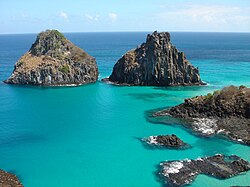- The pier of Blankenberge, Belgium
- Huntington Beach Pier, California
- Duxbury Pier Light in Plymouth harbor
- An oil drilling platform off the coast of Santa Barbara, CA
- Victorian pier at Clevedon, Somerset, England
- The Solitaire , one of the largest pipe-laying ships in the world
- Oosterscheldekering sea wall, the Netherlands.
- One of the three movable barrier sections of the Oosterscheldekering
- Aerial view of a typical marina (harbor dredge and lighthouse in lower right)
- Oil platform Mittelplate includes an accommodation platform
- Oil platform P-51 off the Brazilian coast is a semi-submersible platform
- Harbour cranes unload cargo from a container ship at the Jawaharlal Nehru Port in Navi Mumbai, India.
- The Saipem 7000 , a semi-submersible crane vessel equipped with a J-lay pipe-laying system
- University of Maine's Floating wind turbine VolturnUS 1:8 was the first grid-connected offshore wind turbine in the Americas.
- A typical Finnish pier with a table, chair and ladders for swimmers in Joutsa, Central Finland
External links
-
 Media related to Marine architecture at Wikimedia Commons
Media related to Marine architecture at Wikimedia Commons - "Marine Architecture Clip Art". FCIT. 2015-08-29. Retrieved 2025-07-08.


















